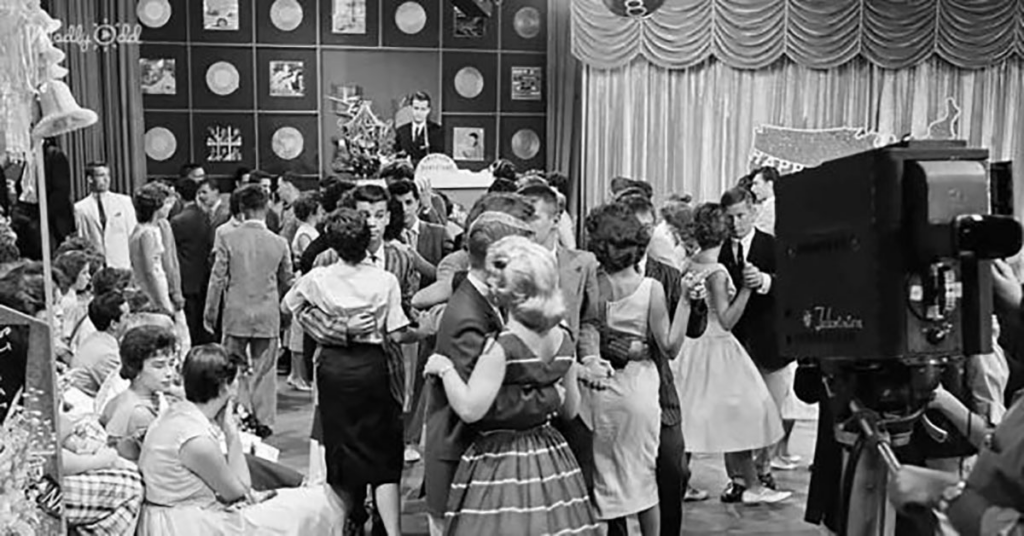
American Bandstand brought joy, energy, and teenage excitement into millions of American homes. With clean-cut dancers, catchy music, and Dick Clark’s smooth hosting, it looked like a perfect world. But as any performer knows, what happens on camera is only part of the story. Behind the scenes, there were real emotions, strict rules, and more pressure than most people realized.
This is what American Bandstand didn’t show you—the truths hidden behind those iconic teenage smiles.

The Dress Code Wasn’t Optional

While dancers looked effortlessly stylish on screen, their appearance was carefully regulated. Girls had to wear skirts or dresses—no slacks allowed. Boys had to wear jackets, ties, and polished shoes.
Dancers were turned away at the door if they didn’t meet the dress code. Some teens even brought backup outfits in case they were rejected. Image mattered, and Bandstand wanted to maintain a standard that would be acceptable to parents, sponsors, and national audiences.
Competition for Camera Time Was Real
Everyone wanted to be in front. The most popular dancers often received the best camera angles and the most attention from fans. This created quiet rivalries—some friendly, some not.

Dancers practiced at home, arrived early to claim good spots, and sometimes even choreographed routines to stand out.
While on TV it looked spontaneous, in reality, many were fighting for visibility. A few seconds of airtime could lead to fan mail, local fame, or even interviews in teen magazines.
Not Everyone Felt Welcome
In its early years, Bandstand was not fully inclusive. The Philadelphia studio audience was initially all-white, and Black teenagers were not allowed to participate. This policy changed later when the show moved to Los Angeles, but for many, it left lasting disappointment.

Even among accepted dancers, there were feelings of insecurity. Not everyone came from a wealthy background, and some felt pressure to “look the part.” Beneath the smiles, many teens were navigating complex emotions of identity, class, and belonging.
Romance Wasn’t Always Real
Viewers loved to imagine teen dancers falling in love on screen—and some did. But many of the relationships were exaggerated for TV appeal. Couples were encouraged to dance together repeatedly, even if they weren’t close off-camera.

Some dancers admitted years later that they were told to smile and “look like sweethearts,” even if the chemistry was purely performative. For teens still figuring themselves out, it was strange to act out relationships in front of millions.
Pressure to Be Perfect
Perhaps the biggest secret was how much pressure these teens were under. Though they weren’t paid, they were expected to show up, behave perfectly, and look good—every single day.
There was no room for bad moods, mistakes, or off days. Some dancers reported feeling anxious before tapings. Others quietly quit when the pressure became too much.
But they rarely let it show. They smiled, they danced, and they became part of a fantasy that America tuned into religiously.
Conclusion
American Bandstand gave us unforgettable music, groundbreaking moments, and generations of youthful energy. But like any show, there was a reality behind the performance. And the more we understand what those smiling teens were really going through, the more we appreciate the legacy they left behind.